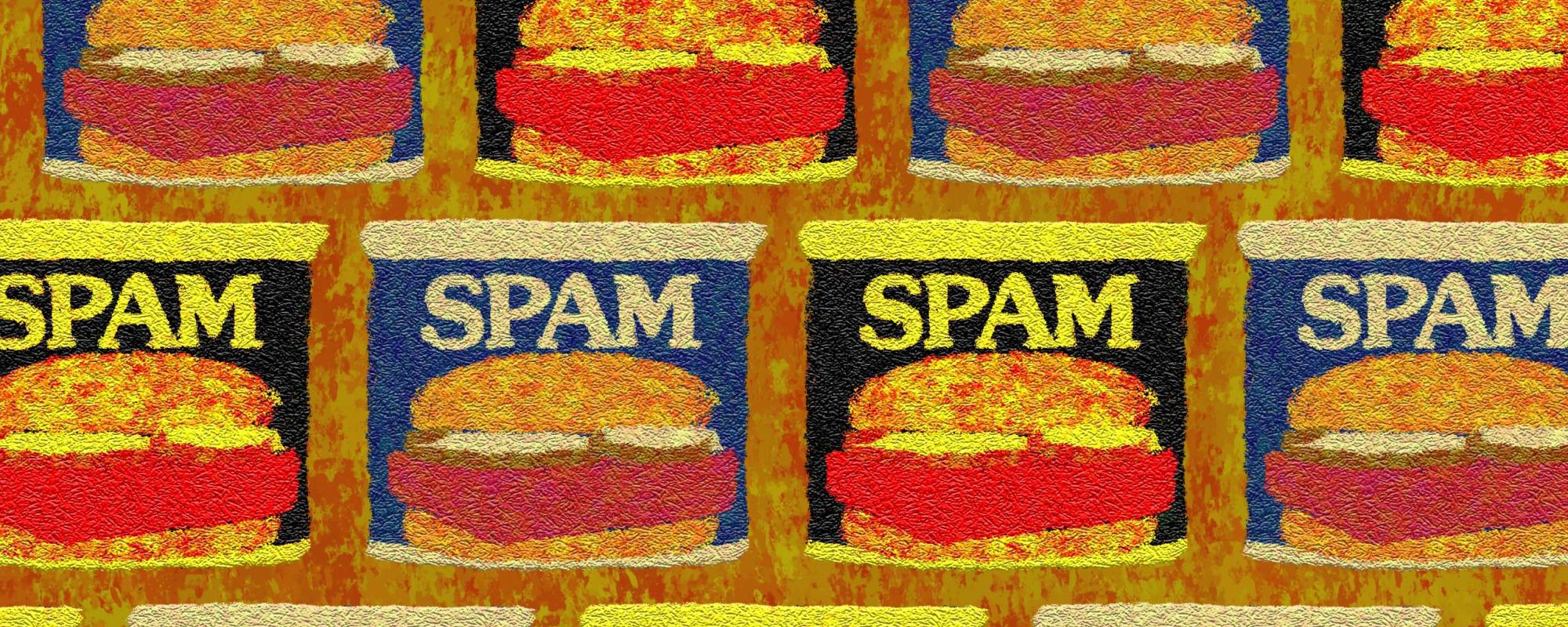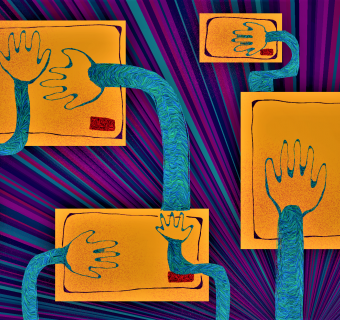When I was a kid, Saturday mornings meant a breakfast of fried rice, a runny egg, and SPAM—a staple in our pantry growing up. The sound of rice crackling in the pan was the alarm cueing me to run downstairs, where I would watch my mother hold the blue can upside down, letting the pink cube of meat slip out slowly and thump onto the cutting board. She would cut thin, salty slices ready to fry, my mouth watering with anticipation. I was eating the history of my being.
When I was a kid, Saturday mornings meant a breakfast of fried rice, a runny egg, and SPAM—a staple in our pantry growing up.
A short history of SPAM for the uninitiated:
A mix of pork, water, salt, sugar, and sodium nitrate was created by Hormel Foods Corporation in 1937. Imagine assembly lines of “unprofitable” pork shoulder being packed into those blue and yellow cans; dozens by dozens of pink cubes ready in a single moment. Early ads emphasized the convenience of SPAM, calling it a “miracle meat.” For its consumers, it was cheap, long-lasting, and could be eaten with the crack of a can.
SPAM then became of essential use to the United States military, sending millions of cans with troops to Guam, the Philippines, South Korea, and Japan during World War II. The Philippines was introduced to SPAM at a time where my ancestors were fleeing from Japanese invasion and resisting occupation. Since then, SPAM has become an integral part of the Filipino diet.
For the Philippines, only the middle and upper classes could afford SPAM. Seeing a can of SPAM in a Filipino pantry meant they were middle class and could afford it, or a family member brought it from overseas as a souvenir. The brand name was just as important as the actual food.
Filipinos never truly became independent of American colonization, as the United States Armed Forces recruited several thousands of Filipinos into the military.
At the end of World War II, in 1946 when the Philippines became an independent nation, the United States kept a military presence in the Philippines in Subic Bay. Filipinos never truly became independent of American colonization, as the United States Armed Forces recruited several thousands of Filipinos into the military. Branches like the Navy would offer higher pay than any other occupation in the Philippines, in addition to incentives like the opportunity to travel the world, and the possibility of becoming a citizen of the United States.
Many Filipinos saw this as an opportunity to build a better life, due to the deteriorating economic and political environment in the Philippines. The idea of fulfilling the American Dream was prevalent, and later fulfilled. The Navy provided a good fortune for poverty stricken families, but what goes unsaid is that the United States military presence is what led to the Philippines' economic deterioration, but that’s a story for another time.
To think that two strangers left from the same place and end up meeting in the United States is not a product of fate, but of colonization and imperialism.
My Filipiono grandfather joined the Navy, ate SPAM, and later earned his United States citizenship. My Filipino grandmother came to the United States as a student nurse in 1965, to further her training and help fill the United States' nursing shortage. They met in the United States in 1966, married in 1967 and had my mother in 1968. To think that two strangers left from the same place and end up meeting in the United States is not a product of fate, but of colonization and imperialism.









